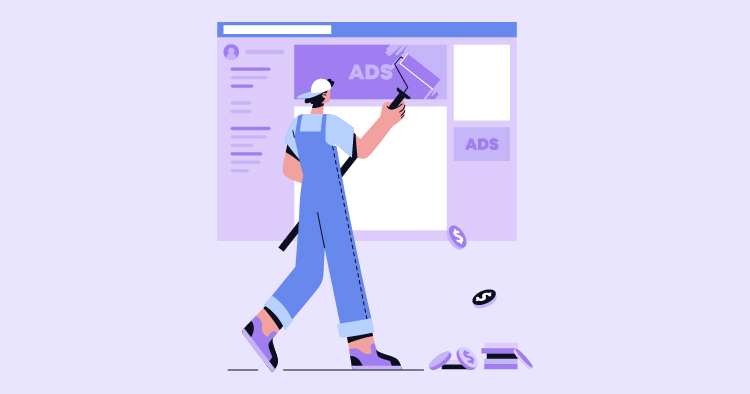Pay-per-click advertising is a powerful tool for businesses in the car industry. It helps attract more people to buy cars or services to their websites. Using the proper methods, PPC can make your business more visible online and attract more potential customers. Knowing how to pick the best keywords, write suitable ads, and decide how much to pay for each click is essential. This can help car dealerships and companies do better than their rivals and get more for the money they spend on ads. This article will talk about the best PPC strategies for the car industry. These tips will help businesses understand how to use digital advertising effectively and see actual results.
Understanding Automotive PPC
Automotive PPC, or Pay-Per-Click advertising, is a method used in digital marketing where businesses pay a fee each time one of their ads is clicked. This approach is like buying your way to more website visitors instead of waiting for them to come to you naturally. This can be a brilliant way for car dealerships and auto businesses to bring in people interested in buying cars or services.
PPC differs from old-school ads because it lets businesses show their ads to people looking for what they’re selling. This is more efficient than traditional ads that reach many people, including those who may not be interested. With PPC, you’re explicitly targeting folks who have shown they want what you have, which can be much more effective.
The car industry is competitive, and cars themselves are big-ticket items. PPC fits in well here because it helps car dealerships connect with potential buyers when they’re ready to purchase. This timing is crucial and can lead to more sales and a better use of advertising money, which is what every business wants.
Understanding Keyword Research for Automotive PPC
Keyword research is essential for any pay-per-click (PPC) campaign, including those in the automotive industry. It’s about understanding your potential customers’ language when looking for the vehicles and services you offer. By figuring out these key terms, you can tailor your PPC ads to match these searches, which increases the chances that the right audience will see your ads.
Several tools are available to start your keyword research. Google’s Keyword Planner is a popular choice, offering insights into how often specific terms are searched and suggestions for related keywords. Other platforms like SEMrush and Ahrefs provide a deeper dive, allowing you to peek at your competitors’ keywords, which can inform your strategy.
Choosing the Best Keywords
Relevance is critical when picking keywords for your automotive PPC efforts. You want to select terms closely aligned with what you’re selling. For example, if you’re a car dealership, you might target specific car makes and models or services like “oil change” or “brake repair.”
Search volume is another essential factor—it tells you how many people are looking for a particular term. If no one’s searching for the keywords you’re targeting, your ads won’t be seen. But if you only target the most popular keywords, you might be in a bidding war against many competitors.
Struggling with Digital marketing? Book Your Free Strategy Session!
- 30-Minutes Session
- Expert Insights
- Data-Driven approach
- Optimized Strategies for Your Goals
That’s where long-tail keywords come in. These are longer, more specific phrases that might have a lower search volume but also less competition. For instance, instead of “SUVs,” you might target “affordable family SUVs with good mileage.” These keywords can be more affordable and might attract more qualified leads—people closer to purchasing.
Balancing Volume and Competition
It’s all about balance. You want keywords with enough search volume to drive traffic but aren’t so competitive that they’ll blow your budget. A mix of general and long-tail keywords often works best, giving you visibility and a better chance of attracting serious buyers.
In the end, effective keyword research for your automotive PPC campaigns can lead to more targeted ads, better click-through rates, and, ultimately, more sales. Finding the perfect mix takes time and a bit of trial and error, but the payoff is well worth the effort.
Creating Compelling Ad Copy
Your ad copy must be magnetic and persuasive to draw in potential customers. The hook will catch the eye of car buyers scrolling through their search results. Think of your ad copy as a quick pitch to your audience – it should be concise yet powerful enough to make them want to learn more about what you’re offering.
Your headlines and descriptions are the first things a potential customer will read, so they must be captivating. They should align with the keywords shoppers use to find vehicles like yours. This alignment makes your ads more relevant to the searcher and increases the likelihood of being noticed and clicked on.
When you weave your targeted keywords into your ad copy, you’re not just speaking your customers’ language but also optimizing your ads for search engines. This can boost your ad relevance and Quality Score, which is how Google rates the quality of your ads. A good Quality Score can mean paying less for each click and enjoying more prominent ad placement.
Always keep the people you want to reach at the forefront of your mind when crafting your ad copy. Use terms and phrases that resonate with them and highlight what sets your dealership or automotive service apart. Are you offering unbeatable prices, exceptional customer service, or a can’t-miss promotion? Make sure that’s front and center.
Compelling Calls-to-Action
A compelling call to action is the final nudge encouraging potential customers to click on your ad. Whether you want them to “Shop Now,” “Book a Test Drive,” or “Get More Info,” your CTA should be clear and direct, prompting them to take the next step in their car-buying journey.
Focusing on these elements will help you create ad copy that stands out and converts browsers into buyers. Remember, the goal is to make every word count and craft a message that speaks directly to your target audience’s needs and desires.
Struggling with Digital marketing? Book Your Free Strategy Session!
- 30-Minutes Session
- Expert Insights
- Data-Driven approach
- Optimized Strategies for Your Goals
Optimizing Landing Pages for Conversion
When someone clicks on your pay-per-click (PPC) advertisement, they land on a specific page of your website that’s designed to welcome them and encourage them to take action. This is your landing page, and making a solid impression here is critical to turning these visitors into customers or leads.
The landing page is where the magic happens—you convince a visitor to take the next step in their customer journey. For the best results, your landing page should connect directly with the ad that the user clicked on. For example, if your ad promises a discount on shoes, your landing page should prominently feature that discount.
It’s also essential that visitors understand what you’re offering right away and know what to do next. If you want them to sign up for a newsletter, buy a product, or contact you for more information, make that process as straightforward as possible. A clear, easy-to-find call-to-action (CTA) button or form can guide them on what to do next.
Creating an Effective Landing Page
To create a landing page that converts:
– Keep it Relevant: Match the content of your landing page with the ad’s promise to keep the user’s experience consistent and reassuring.
– Make it Attractive: Your landing page’s design should be visually pleasing. Use high-quality images, readable fonts, and an easy-on-the-eye color scheme.
– Speed it Up: A slow-loading page can drive visitors away. Make sure your landing page loads quickly to keep users engaged.
– Clear CTAs: Your call-to-action should show visitors exactly what you want them to do. Use action-oriented language that creates a sense of urgency or benefit.
Remember, the goal of your landing page is to engage visitors and encourage them to take the action you want. You can create a landing page that converts more visitors into customers by focusing on relevance, design, speed, and clear CTAs.
Struggling with Digital marketing? Book Your Free Strategy Session!
- 30-Minutes Session
- Expert Insights
- Data-Driven approach
- Optimized Strategies for Your Goals
Targeting the Right Audience
Reaching the right people is crucial for pay-per-click (PPC) in the automotive industry. You must understand who will most likely be interested in your products or services. This involves digging into details about your potential customers, such as their age, gender, location, income, and passions. This information helps you create buyer personas—semi-fictional characters representing your ideal customers.
Once you have these personas, you can tailor your PPC ads to match their preferences and needs. This means your ads will be more relevant to the people who see them, which can lead to higher click-through rates and more sales. For example, if you know your target audience is interested in luxury vehicles, you can create ads highlighting the premium features of the cars you’re selling.
Setting Up Effective PPC Campaigns
Creating a PPC campaign that brings results requires careful planning and execution. You start with keyword research to determine what potential customers are searching for. Then, you craft your ads to grab their attention. The landing page where your ad sends them must also be persuasive and relevant to encourage them to take action, such as making a purchase or filling out a contact form.
Another critical decision is choosing how much to pay for each ad click impression or conversion. This is where bidding strategies come into play. If your main goal is to get as many people as possible to visit your website, you might choose a cost-per-click (CPC) approach. Cost-per-impression (CPM) might be better if your focus is brand awareness. And if you’re all about getting a return on investment, cost-per-acquisition (CPA) could be the way to go.
Finally, you can’t just set up your campaign and forget about it. It would be best to monitor its performance using tools like Google Analytics. These tools show you which parts of your campaign work well and which might need tweaking. Maybe some keywords bring a lot of traffic, but another part of your campaign is doing better at turning clicks into customers. Regular monitoring allows you to adjust your strategy and get the most out of your PPC efforts.
Ad Extensions for Enhanced Performance
Ad extensions can significantly improve your automotive pay-per-click (PPC) campaigns. This information can be added to your ads to give potential customers more reasons to choose your dealership. For example, you can highlight your location, provide contact details, or feature specific models of cars you’re selling. When you include ad extensions, your ads become more eye-catching and valuable, often leading to higher click-through rates.
Using ad extensions can help your ads stand out. If someone is looking for a car dealership, a location extension will show them where you are and how close you may be to them. Call extensions make it easy for interested customers to contact you with just one click. Model and price extensions are great for showing off the cars you have and the deals you offer, giving customers the exact information they’re looking for.
Keep a few things in mind to make the most of ad extensions. Always double-check that the information you add is correct and current. Pick the extensions that make the most sense for your dealership and the people you want to reach. The main aim is to make your ads more appealing to get more clicks and potential sales.
Remarketing Strategies for Automotive PPC
Remarketing is a smart way to boost your automotive PPC efforts. It’s all about getting back in touch with people who have already shown an interest in your dealership, whether they visited your website, clicked on one of your ads, or interacted with you on social media. With remarketing, you can focus your advertising on these individuals to help push them away from making a purchase.
When you create remarketing campaigns, you can see a real improvement in the number of people who buy from you. You can use platforms like Google Ads or social media to show specific ads to people who have already engaged with your brand. This strategy keeps your dealership in their minds and gently encourages them to make that all-important buying decision.
For remarketing to work well, it’s crucial to understand your audience. Break them into groups based on their actions and interests, then design ads that speak directly to them. Use tools that track how people interact with your website and ads to learn what they want. The more your ads connect with what your potential customers want, the more effective they will be.
Mobile Optimization for Automotive PPC
Mobile optimization is necessary for any pay-per-click (PPC) campaign, especially in the automotive industry. As more people use their phones to research car dealerships and compare offers, ads that work well on mobile devices can help your campaign succeed.
When setting up ad campaigns for car dealerships with mobile users in mind, you need to consider how smartphones are different. Your ads need to be short but still give all the necessary information, and they should have clear instructions on what to do next. It’s also wise to use features meant for mobiles, like buttons that let users call you with just one tap. This makes it much simpler for people on their phones to interact with your ads.
But it’s not just about the ads themselves. It’s just as crucial to ensure the pages your ads send people to are good for mobile use. These landing pages must load fast, be simple to use on a small screen, and offer a smooth user experience. If your landing page is set up well, it can help you get more people to take action, making your whole campaign work better.
Competitor Analysis in Automotive PPC
Knowing your competitors’ actions can help you succeed with automotive PPC. By looking closely at other companies’ methods, you can learn a lot about their methods, which can improve your campaign.
First, figure out who your main competitors are and take a close look at their PPC campaigns. Check out their keywords, what their ads say, and what their landing pages look like. What are their strengths? What could they improve? Understanding these things can help you see chances to do better and avoid making mistakes they might be making.
Analyzing your competitors isn’t about just doing what they do. It’s about using what you learn to get ahead. Please take this information and use it to make your dealership stand out. Ensure your ads focus on what makes you different and better, and create memorable ads that grab attention.
Ad Testing and Optimization
To keep your automotive PPC (Pay-Per-Click) campaign effective, you must test and refine your strategy regularly. This involves closely examining your ads, keywords, and landing pages and tweaking them based on the data you have about their performance.
One effective way to fine-tune your campaign is through A/B testing, like a head-to-head challenge for your ads. You create two versions of an ad or landing page with slight variations, such as a different headline or a unique call-to-action. By running these side by side, you see which one your potential customers prefer, and then you can use the winning elements to strengthen your campaign.
Paying attention to the numbers is critical. Tools that analyze your campaign’s performance can show you which parts of your PPC efforts are performing well and which parts need work. This approach, grounded in accurate data, helps you make intelligent choices that can lead to better results.
By investing time in testing and optimizing, you’re not just guessing what might work; you’re applying what you’ve learned to enhance your campaign. This can help you use your budget more effectively and attract more customers to your dealership.
Final Thoughts
After looking closely at PPC for the car industry, it’s clear that having a good plan is very important. You need to monitor your ads and make changes when needed. You also have to understand what customers want. Doing these things well can make your PPC ads work better. Businesses should also use new trends and technology to improve their ads. PPC success is a journey, especially in the car industry. It’s essential to keep learning and be ready to change your methods to do well over time.



